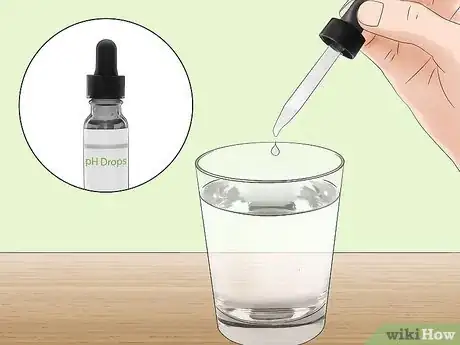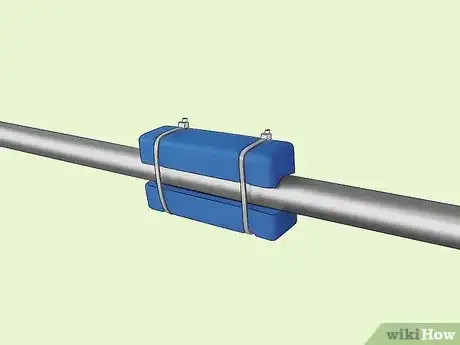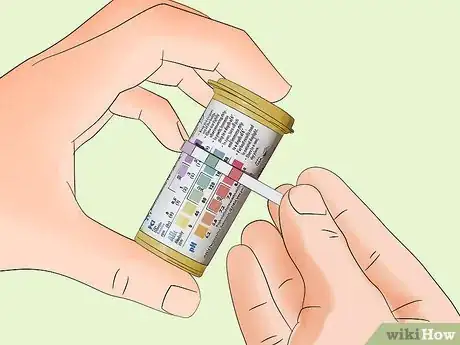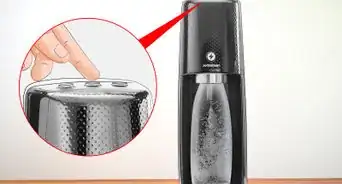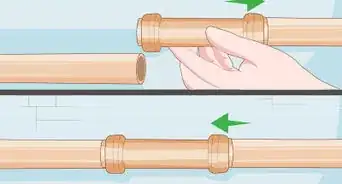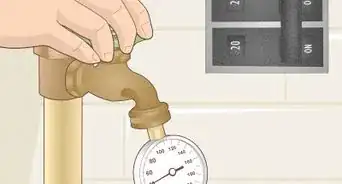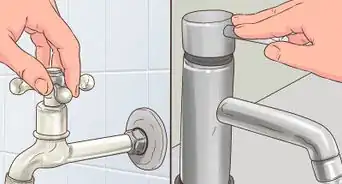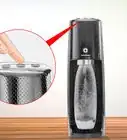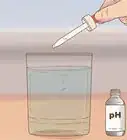This article was co-authored by wikiHow Staff. Our trained team of editors and researchers validate articles for accuracy and comprehensiveness. wikiHow's Content Management Team carefully monitors the work from our editorial staff to ensure that each article is backed by trusted research and meets our high quality standards.
There are 9 references cited in this article, which can be found at the bottom of the page.
This article has been viewed 127,410 times.
Learn more...
Ionizing water is a way to increase its pH level, making it more alkaline and less acidic. Acidic water can be raised to a neutral pH level with this process, and neutral water can be made more alkaline. There are debates about the potential health benefits of alkaline water, but most scientists dispute the idea that drinking water with a pH of 8.5 to 9.5 will have a lasting positive effect.
Steps
Using Different Techniques to Ionize Water
-
1Use a water ionizer machine. The most common way for people to ionize water at home, is by using a water ionizing machine. These machines are attached to your main source of water, such as your kitchen tap. Depending on the model you have, you will be able to set the specific pH levels that you want the water to be.
- Electric water ionizers utilize small voltages of electricity to change the electrical charge of the water molecules.
- Water ionizers tend to be expensive. They may cost between $1000 and $6000.[1]
- If you have an ionizer that you attach to the tap, you will not need a plumber to install it.
- Alternatively, if you have an ionizer that must be attached to the water mains, you may need a plumber if you don't have basic plumbing skills.[2]
-
2Pass the water through bio-ceramic filters. Bio-ceramic filters are made out of select materials--clay, stone, and others--in order to create a magnetic charge within the water. The manufacturers of these filters claim that they work to effectively alter the water’s electrical charge, and the water gains its magnetic charge from particles of magnetite and cobalt within the clay.
- Some advocates for these filters claim they can have significant health benefits.
- There is, however, little scientific evidence to support claims that drinking alkaline water can have significant health benefits.[3]
- If you use this method, be sure to check the pH of the water before you drink it.
- Most filters come as inserts in jugs or other containers that you pour water into and then wait while it passes through the filter.
Advertisement -
3Add pH drops to your glass of water. One easy way to make a small amount of alkaline water, is just to add some pH drops to your water. There are a number of different brands available, but they are all marketed as ways to increase the pH level of water. This option is great if you only need a small amount of alkaline water to drink, but not for any other use (e.g., taking a shower).
- Be careful with this method, and be sure to follow the instructions on the packaging carefully.
- Depending on which brand you use, you may need to add 5 drops per litre of water, or ten drops per litre.
- Do not exceed the recommend amount, and if you are on any medication speak to your doctor first.
-
4Attach magnetic ionizer devices to water pipes. Magnetic devices have long been used to “soften” water as it travels through pipes, and potentially reduce the scaling effect of hard water. Although such devices have been in use for many decades, there is still considerable doubt about their efficacy.[4] Some people now claim that such magnetic devices can be used to ionize water and increase its alkalinity.
- The argument is that by attaching magnetic ionizer devices to your water pipes, your water will have its charge restored as it passes through the pipe.
- There is, however, a distinct lack of published evidence to support the idea that magnetic fields can bring about the ionization of water.[5]
- You can attach easily attach the magnets to a pipe, often without any tools.[6]
-
5Use a batch unit ionizer. Typical batch unit ionizers will ionize 1 gallon (3.8 L) of water at a time. You may choose to use a batch ionizer if you don't need to ionize all the water in your house, but want to ionize a larger amount than one glass at a time.
- With a batch unit ionizer, you will need to fill it with water from the tap, plug it in and turn it on.
- Follow the instructions on your model, and wait while the water is ionized.[7]
Understanding the Debates about Water Ionization
-
1Test the pH level of your drinking water using pH strips. Dip the pH strip into the water but do not swirl it around or stir the water. After about 5 seconds, remove the strip from the water and wait another 5 to 10 seconds. When the pH strip changes colour, compare it to the pH spectrum to determine the pH level of your water.
-
2Don’t expect great health benefits. If you are hoping to improve your health and wellbeing by ionizing your water, it’s important that you spent some time scrutinizing the health claims. This is especially important if you are thinking of buying an expensive ionizing machine. Advocates of ionized water say the alkaline helps balance the acidity in other food and drink we consume, and claim that it can have marked impact on your focus and energy.
- These are difficult things to quantify, however, and scientists say there is little evidence for the claims.
- Your body has mechanisms to keep your pH level within a narrow range on its own.
- Whatever pH level food or drink was at when it entered your body, it is 6.8 when it leaves.[10]
- There has been scientific studies done in Korea and Japan that argue that alkaline water helps treat and prevent diseases.[11]
-
3Talk to your doctor. Some scientists have expressed concern about the lack of clinical evidence to support the claims about ionized water.[12] If you are interested in ionizing water, talk to your doctor for some more advice. If you are on any medication, or you are pregnant, you should always talk to your doctor first.[13]
References
- ↑ http://www.wsj.com/articles/SB10001424052702303404704577314182468322256
- ↑ http://www.ionizers.org/faq.php#a24
- ↑ http://www.freedrinkingwater.com/water_health/health2/health-benefits-from-drinking-ionized-water-page2.htm
- ↑ http://www.chem1.com/CQ/magscams.html
- ↑ http://www.chem1.com/CQ/magscams.html
- ↑ http://www.envirohealthtech.com/magnets.htm
- ↑ http://biontech.en.ec21.com/Batch_Water_Ionizer--855987_855989.html
- ↑ https://www.wqa.org/Learn-About-Water/Common-Contaminants/Acidity-low-pH-
- ↑ http://www.wsj.com/articles/SB10001424052702303404704577314182468322256
About This Article
The easiest way to ionize water is by buying pH drops and adding them to the water you drink. However, make sure you follow the directions on the packaging and speak to your doctor first if you're on any medications. Alternatively, you can purchase a bio-ceramic filter made from clay or stone, put it in a container, and filter your drinking water through it. If you want to ionize larger quantities of water, consider getting a magnetic ionizer device that attaches to your water pipes. To learn how to test the pH level of your drinking water before or after you ionize it, scroll down!


